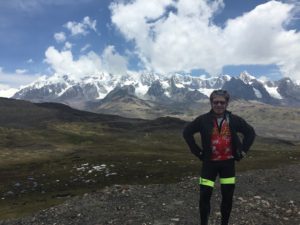
After a truly crappy night’s sleep in a difficult bed we mounted our bikes and set off to finish entering the Andes, climbing to the Cima Coppi (named for one of the greatest bike racers ever, the Cima Coppi is the high point of the Giro d’Italia) of the tour at 15,600 feet.
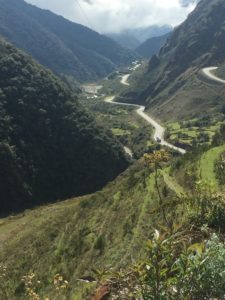
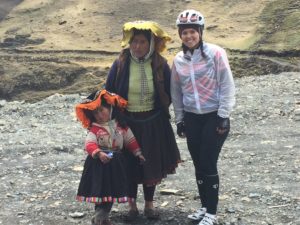
Not a lot of air, and my legs were already trashed from yesterday, so this was hard. It took four hours to climb 5500 feet over 30 kilometers, or 18 miles. For comparison purposes, I was riding easy for four hours at 18 mph on day 1. The road snaked tirelessly upward, switchbacking up some steeper places and every once in a while stretching out at a gentler grade before steepening up again. The villages got smaller, industry giving way to small farms. Higher up we
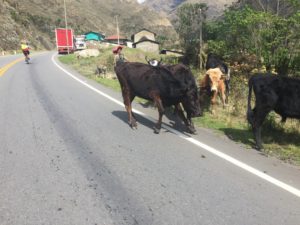
entered llama country, and small herds of llama and alpaca dotted the wide expanse of hillside as the road pitched relentlessly up. I was hurting. The challenge became maintaining a strong enough cadence simply to keep the bike moving in a straight line. After the first couple of hours it was hard to drink and ride at the same time. It got colder, and I added first my legwarmers, then my hat and gloves, then my wool sweater, then my rain jacket. We encountered a brief squall of hail somewhere above 14,000 feet. It felt like it was never going to be over until I raised my head and there was the Ausangate massif, rocky, glaciated and rising another mile above the road. After a few celebratory photos it was time to descend—4000 feet, about an hour and a half, to Ocongate.
The town has a nice feel to it, wide main street, well lit in the evening, lots of kids around, an outdoor stadium and covered sports arena. However, there is a major municipal works problem—the water system had been compromised in some way, and repairs only allowed water from 4-6pm and 5-8am. Toilet flushing was accomplished by bucket; there was one shower on the ground floor with spotty hot water, so my shower tonight consisted of a pat-down with several of Sarabeth’s baby wipes. And to top it all off, the worst dinner of the trip was deep-fried chicken fingers, white rice and a tiny salad I wouldn’t eat anyway. At least the bed was good; firm and warm, and I anticipate a good nights sleep.
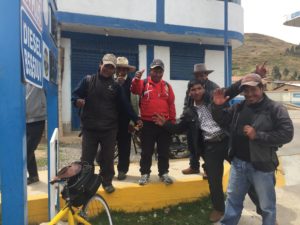
Peru is, I suppose, a developing nation, although it seems quite developed to me. Electricity is everywhere; trucks and busses ply the roads; the towns are full of consumer goods and bustling with commerce. Democracy rules; the symbols of political parties are visibly painted in every town we go through. People are very nice, and generally honest. However, there is a lot of attention being paid to security; roll-down doors, iron gates, a visible police presence on the road and in the towns. There were significant territorial wars between Peru, Bolivia and Chile in the late 1800’s; there is underlying racially-based conflict between Spanish Lima (where a third of the population lives), and the Andean peoples. The Shining Path insurgency of the late 20th Century was brutally quelled by President Alberto Fujimori, but there were reconciliation efforts as well, and the country seems as unified as any other messy democracy, with people generally abel to pursue their own lives.
